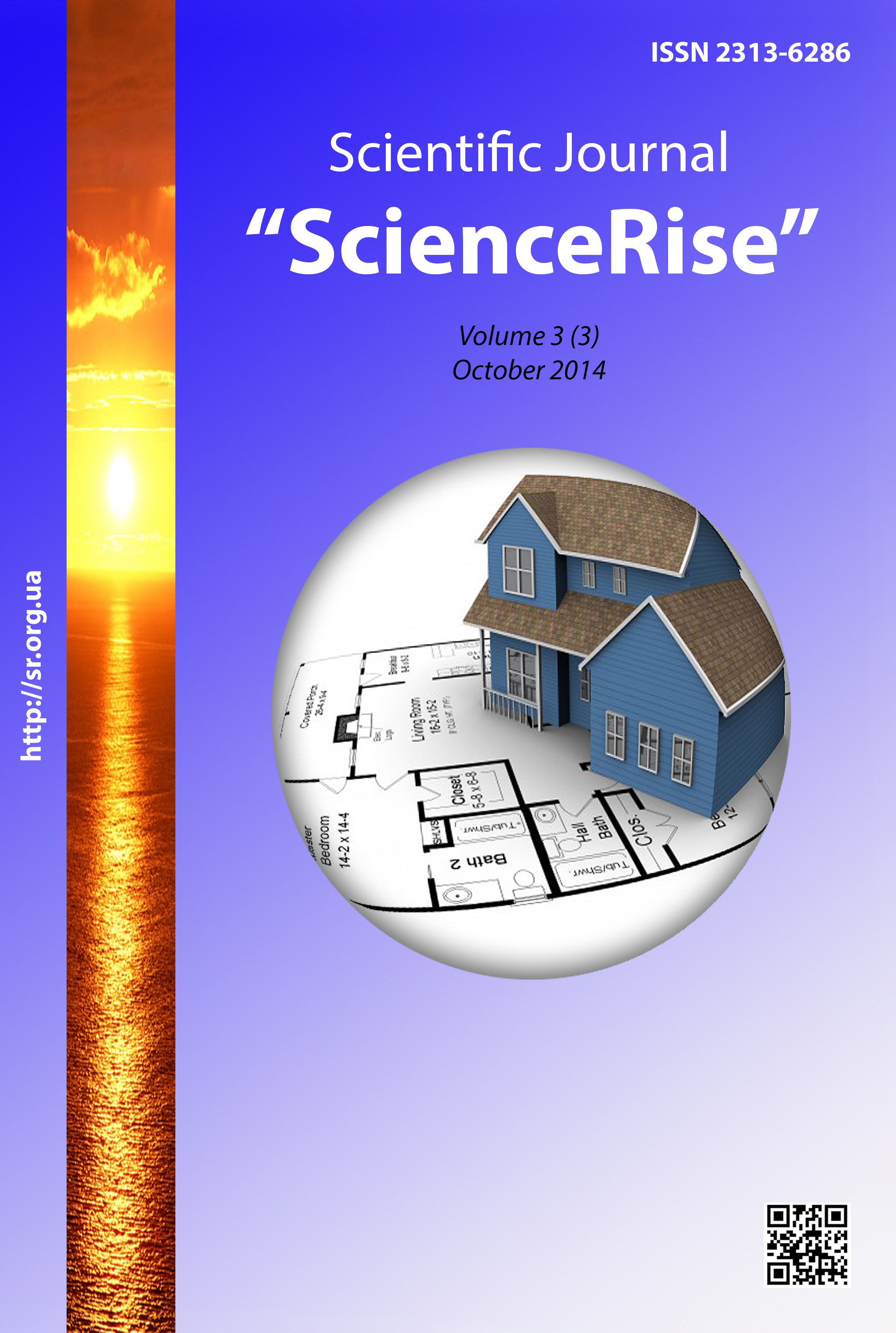Lighting – laboratory practice
DOI:
https://doi.org/10.15587/2313-8416.2014.27468Keywords:
lighting, laboratory bench, process modeling, object parameter, laboratory workAbstract
In this article discussed one of the possible variants of the building study bench for laboratory work and practical lessons on the basic parameters of the study of artificial and natural lighting in the labour protection in accordance with the DBN V.2.5-28-2006. The model is on the latest LED components, which has high reliability, maintainability and eliminates the disadvantages of the existing laboratory stands.
References
Zakon Ukrainyi «Pro osvItu» [Law of Ukraine "On Education"] ot 01.07.2014g. № 1556-VII. Pro vnesennja zmin do Typovogo polozhennja pro buhgalters'ku sluzhbu bjudzhetnoi' ustanovy.
Kungs, Ya. A. (1989). Avtomatizatsiya upravleniya elektricheskim osvescheniem [Automating the management of electric lighting]. Energoatomizdat, 112.
Obolentsev, Yu. B., Gnidin, Yu. B. (1990). Elektricheskoe osveschenie obschepromyishlennyih pomescheniy [Electric lighting general industrial premises]. Moscow, Russia: Energoatomizdat, 132.
Dzyundzyuk, B. V., Ivanov, V. G., Klimenko, V. M., Soldatov, A. V., Styitsenko, T. E., Tupunov, S. D., Filenko, N. A. (2006). Ohorona pratsi. ZbIrnik zadach [Occupational Health. Collection of problems]. Kharkiv: KhNURE, 243.
Ayzenberg, Yu. B. (Ed.) (1983) Spravochnaya kniga po svetotehnike [Handbook of Illumination]. Moscow: Energoatomizdat, 472.
Knorring, G. M., Fadin, I. M., Sidorov, V. N. (1992) Spravochnaya kniga dlya proektirovaniya elektricheskogo osvescheniya [Handbook for the design of electric lighting]. Moscow, Russia: Science, 117.
Downloads
Published
Issue
Section
License
Copyright (c) 2014 Борис Васильевич Дзюндзюк, Геннадий Викторович Копылов

This work is licensed under a Creative Commons Attribution 4.0 International License.
Our journal abides by the Creative Commons CC BY copyright rights and permissions for open access journals.
Authors, who are published in this journal, agree to the following conditions:
1. The authors reserve the right to authorship of the work and pass the first publication right of this work to the journal under the terms of a Creative Commons CC BY, which allows others to freely distribute the published research with the obligatory reference to the authors of the original work and the first publication of the work in this journal.
2. The authors have the right to conclude separate supplement agreements that relate to non-exclusive work distribution in the form in which it has been published by the journal (for example, to upload the work to the online storage of the journal or publish it as part of a monograph), provided that the reference to the first publication of the work in this journal is included.

